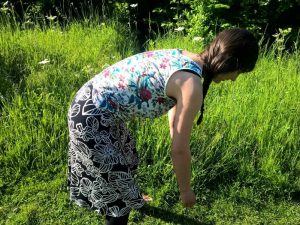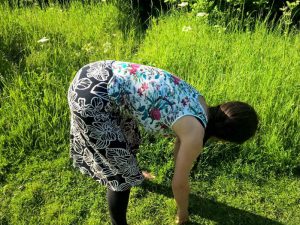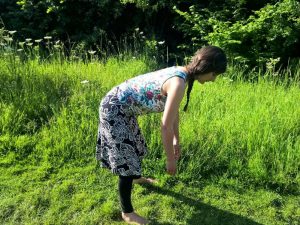Hinging at the hip to prevent back pain
People in traditional cultures seem to know instinctively how to bend in a way that doesn’t predispose them to back pain. Think of workers picking rice or tea.
Notice how they bend at the hip joints, not in the back; they flex forward at the top of the thighs, not at the waist. This principle of ‘hip-hinging’ has received a lot of attention recently, but most of us find it difficult to do.
This is likely to be because the particular stresses of living in a complex, industrialised society have led us to forget how to use our bodies elegantly and effortlessly.
Perhaps another reason is the emphasis that is placed on ‘bending and lifting with the knees’. Certainly, if you are reaching down for something you’ll experience less back pain if you bend your knees. In order to bend at the hips you’ll also need to bend at the knees.
However, if you look at pictures of rice or tea pickers at work, they don’t bend their knees more than about 10 or 15 degrees. Of course, to safely lift something from ground level they would bend the knees more, but for bending to do their work a slight knee bend allows them to flex at the hips quite a lot without losing their balance.
Bending the knees a little allows the hips to move backwards behind the feet. The hamstring muscles have to stretch slightly and the gluteal muscles do a lot of the work – this is much safer than relying on the back muscles.
If you’d like to read an interesting article from February this year about reducing the likelihood of back pain by bending at the hips you can view it here
The cover image for this blog post is of my friend Bryony hip-hinging in the park. She has great flexibility and is able to adopt these postures easily, so she’s unlikely to suffer from back pain.
In the first 3 photos her back is still a little bent:



Notice how the neck is tipped back, the pigtail lies close to the shoulder and arm.
For the next 3 photos she consciously lengthens through the spine and the top of her head (a familiar idea to anyone who has studied Alexander Technique).



You can clearly see that she looks taller. Her movement is more graceful and free from strain. Notice how the back flattens, the head is better-aligned with the back and the pigtail has moved further forward:


